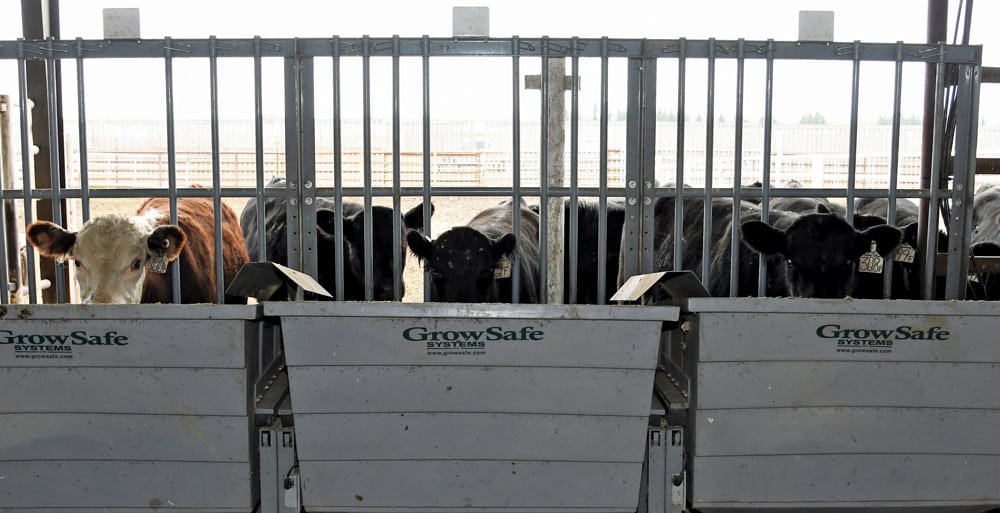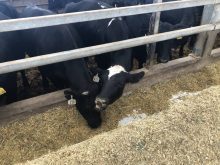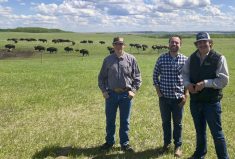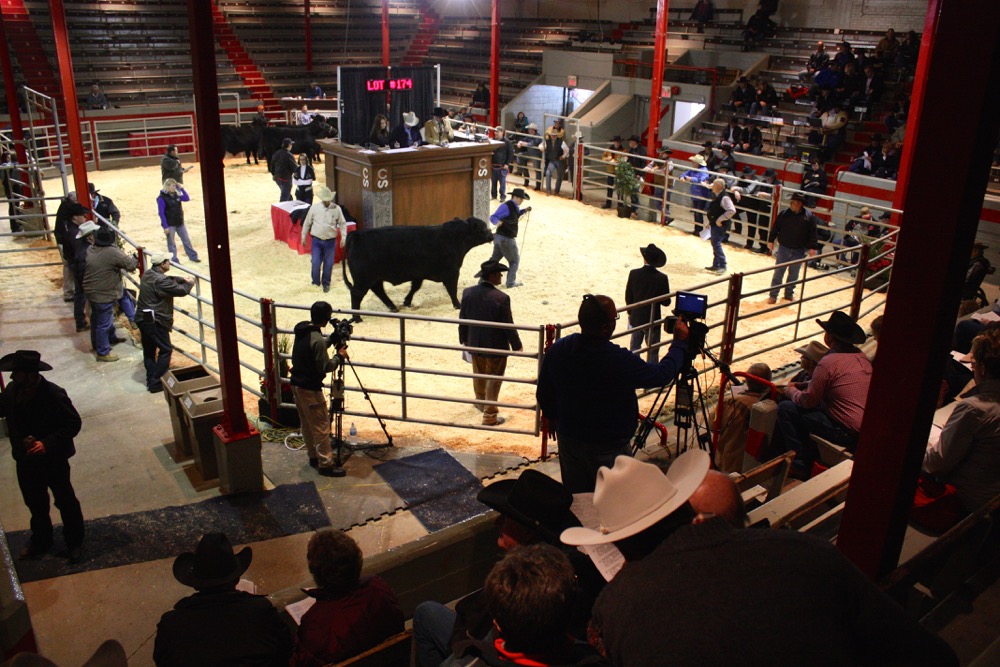Manitoba’s lone multi-breed bull test station is the last of a dying breed.
In its early days, the Manitoba Bull Test Station was a way for cattle producers to evaluate their genetics before genetic testing became de rigueur in the livestock industry.
Opened in 1963 near Douglas, just east of Brandon, the Sire Indexing Centre (as it was known then) had one simple goal — to test bull performance under a controlled set of management practices and allow producers to select (and sell) the top performers.
Read Also

Farming Smarter receives financial boost from Alberta government for potato research
Farming Smarter near Lethbridge got a boost to its research equipment, thanks to the Alberta government’s increase in funding for research associations.
That hasn’t changed in the nearly 55 years since then — but the agriculture industry has.
“Back in our heyday in the ’80s and early ’90s, we fed roughly 600 purebred bulls. Now we have around 100 to 150 bulls on test every year,” said station manager Tyler Winters.
“The thought back then was that if you were a producer, you could see how you were doing compared to everybody else, and then provide good bulls for the commercial breeders to buy.
“That hasn’t changed a lot, but the numbers are going down.”
That’s largely a result of purebred breeders having sales at their own facilities, said Jeff Ross, vice-president of the station’s board of directors.
“It’s simply because of a change in the industry with independent producers having their own production sales,” said Ross, who produces Shorthorn cattle near Brandon. “That’s taken the numbers out.”

Bull testing
While single-breed sales have become more popular in recent years, the Douglas bull test station is the last remaining public multi-breed station in the province. Angus is the predominant breed there — over half of last year’s bulls were Angus, with the other half going to Limousin, Shorthorn, Herefords, and Charolais bulls.
Every bull is fed the same diet, regardless of the breed.
“We want to see what these animals can do,” said Winters. “The real test is on weight gain. We shoot for three pounds a day, and anything above that is just more genetics than anything.”
In a typical year at the station, purebred breeders bring their cattle to the station at the end of September or early October, when they’re put on a 28-day ‘warm-up.’ The warm-up period puts all of the cattle on the same diet in the same environment — allowing producers to test the true genetic potential of their animals.
At the start of November, bulls are weighed and then put on a typical backgrounding ration of 13 per cent protein pellets and free-choice hay for roughage — “something with not too much power to it to let them grow into their body a bit,” said Winters.
“We don’t push them too hard. We want their genetics to do what they’re supposed to do.”
The bulls are weighed multiple times throughout the testing season, which runs until February, at which point they’re evaluated for things such as average daily gain and weight per day of age.
“These are statistical numbers that a purchaser here at the station will perhaps use in his purchasing decisions when choosing one bull over another,” said Ross.
The animals are put up for sale in the spring. The whole process — including feeding, testing, advertising, and selling the animal — typically costs about $1,200 per bull (depending on feed prices).
Last year, the station also launched a ranch horse sale to diversify its business, to good results.
“It was standing room only,” said Ross. “Most everybody with a ranch horse probably has some cows. If they have some cows, they probably need a bull. We’re just trying to expand our opportunities to promote the bulls that are for sale here.”
Lakeland College testing
But the cattle sector has changed in the 50-plus years since the Manitoba station first opened, and that will make it tricky for it to regain the numbers it had in its glory days.
The traditional bull test done at the station is falling out of fashion, partly because birth weights have increased as a result of selecting bulls with the highest daily gain. Now, producers are targeting lower birth weights and higher feed efficiency.
That’s the type of testing that’s happening at Lakeland College today.
“The bull test here is not the same as the traditional bull test,” said Obi Durunna, livestock research scientist at Lakeland College. “We want to focus on testing bulls for feed efficiency, especially residual feed intake.”
The reason for that is threefold. First, feed is expensive, representing between 50 and 70 per cent of the variable costs of producing an animal, said Durunna.
“If we can identify which animals are more efficient at consuming feed without compromising on other traits, that’s more sustainable and a better route to productivity and profitability,” he said.
Feed efficiency is also “moderately heritable,” so it’s likely that any offspring of feed-efficient animals will likewise be more efficient.
“The next generation is also improved if you use such animals for breeding,” he said.
And finally, bigger isn’t necessarily better when it comes to bulls.
“When you use a feed-conversion ratio or a feed-to-gain ratio to select animals, the selection has tended toward keeping bigger animals,” said Durunna. “But bigger animals wouldn’t necessarily translate to animals that are more feed efficient.”
Lakeland is currently testing about 30 bulls from a local producer who wants to know the efficiency profile of his animals.
“The intent is to have feed efficiency included in the production goals and breeding objectives of the producers,” said Durunna. “Producers don’t need to test all their bulls. If they have weighed all other factors on the bulls and decide to test just the few that they’re interested in, this type of testing would serve them well in improving their herds.”















